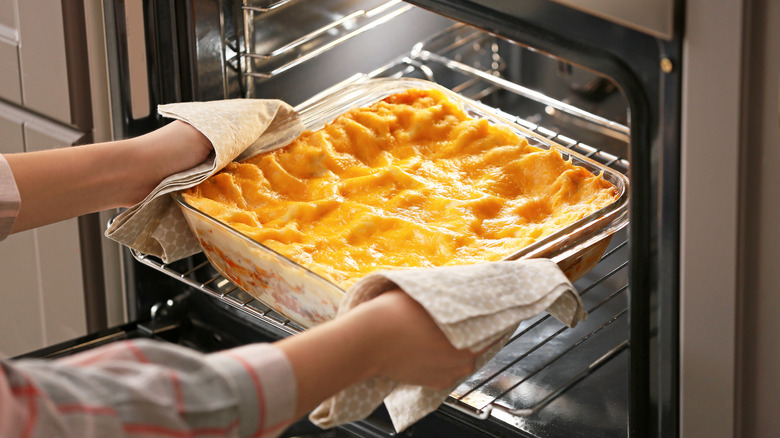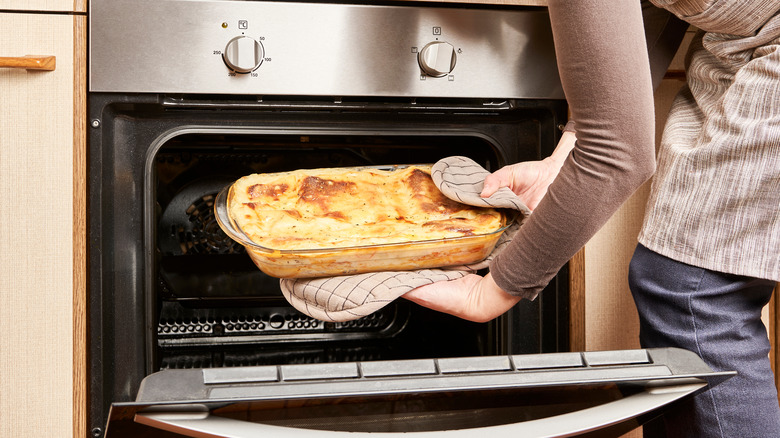The Absolute Best Temperature Range For Cooking Casseroles
Have you prepared a casserole lately? It's pretty likely that you have, as a casserole is defined by MasterClass as any meal that's prepared in a casserole dish (a deep, wide baking pan, that is) and baked in the oven. Casseroles include pasta dishes such as baked ziti and mac and cheese; marshmallow-topped candied yams; and even deep-dish pizza. Technically, even desserts such as cobblers and crisps are casseroles, as they, too, are assembled and baked in a casserole dish.
Casseroles are famous for being excellent make-ahead dishes, as they can be assembled ahead of time and refrigerated until you're ready to bake and eat (via Food Network). They also generally freeze extremely well, making them a go-to choice for busy seasons when you want to stock your freezer with ready-to-heat meals (via PureWow). Plus, casseroles tend to be crowd-pleasers, with dishes such as lasagna and potato gratin comforting and tasty to a wide range of palates.
It's pretty clear that casseroles are a great category of dish to feature in your home cooking rotation. But if you're not all that used to making them, you might wonder if casseroles should be cooked in a low and slow — or a fast and hot — oven.
Casseroles should be baked in a moderately hot oven
As in many areas of cooking — and life, for that matter — moderation is always a safe bet when you set out to bake a casserole. Too cool of an oven and your casserole will take forever to cook through. But too hot, and it won't cook evenly without some parts of it scorching first, according to KitchenSeer. A great rule of thumb, the site states, is to bake a casserole above 300 degrees F and below 400 degrees F: 350 degrees F is a great sweet spot.
Another consideration when baking a casserole? Many dishes in this category boast a layer of grated cheese on top, from mozzarella-topped kale lasagna to cheddar-bedecked hash brown casserole. In these instances, it can be a great idea to cover the casserole with aluminum foil once it's assembled, then remove the foil part way through baking: Doing so helps the casserole cook evenly, thanks to the steam trapped inside and also prevents the top layer of the dish — cheese and all — from burning (via Allrecipes). Then, when you remove the foil and allow the steam to escape, you can return the casserole to the oven until it gets browned and bubbly on top.

